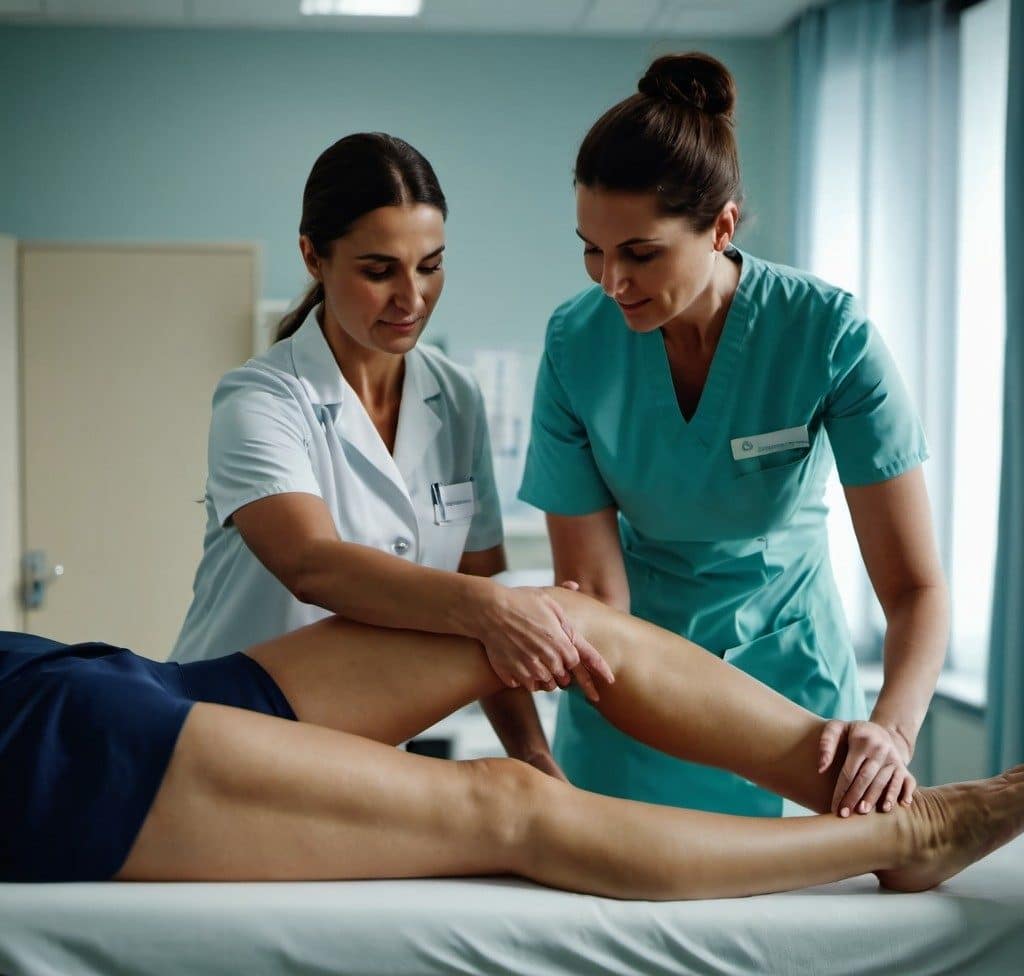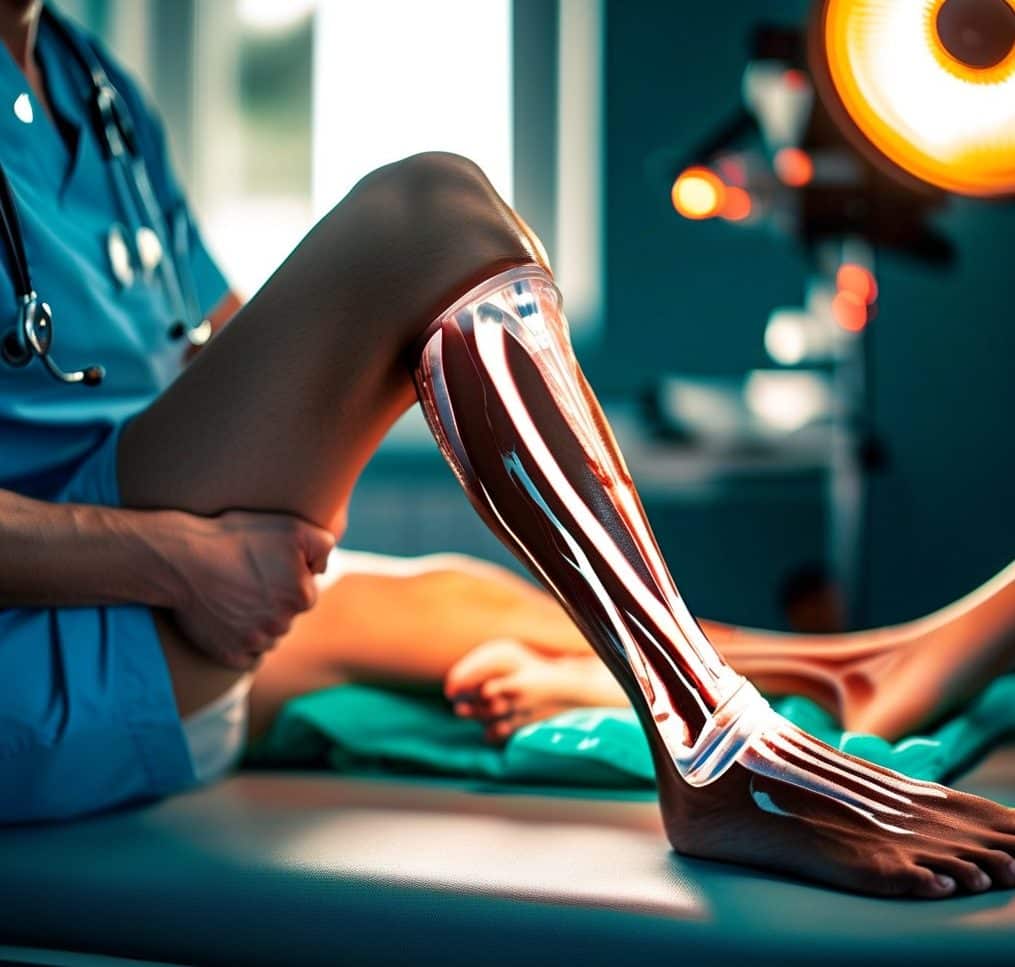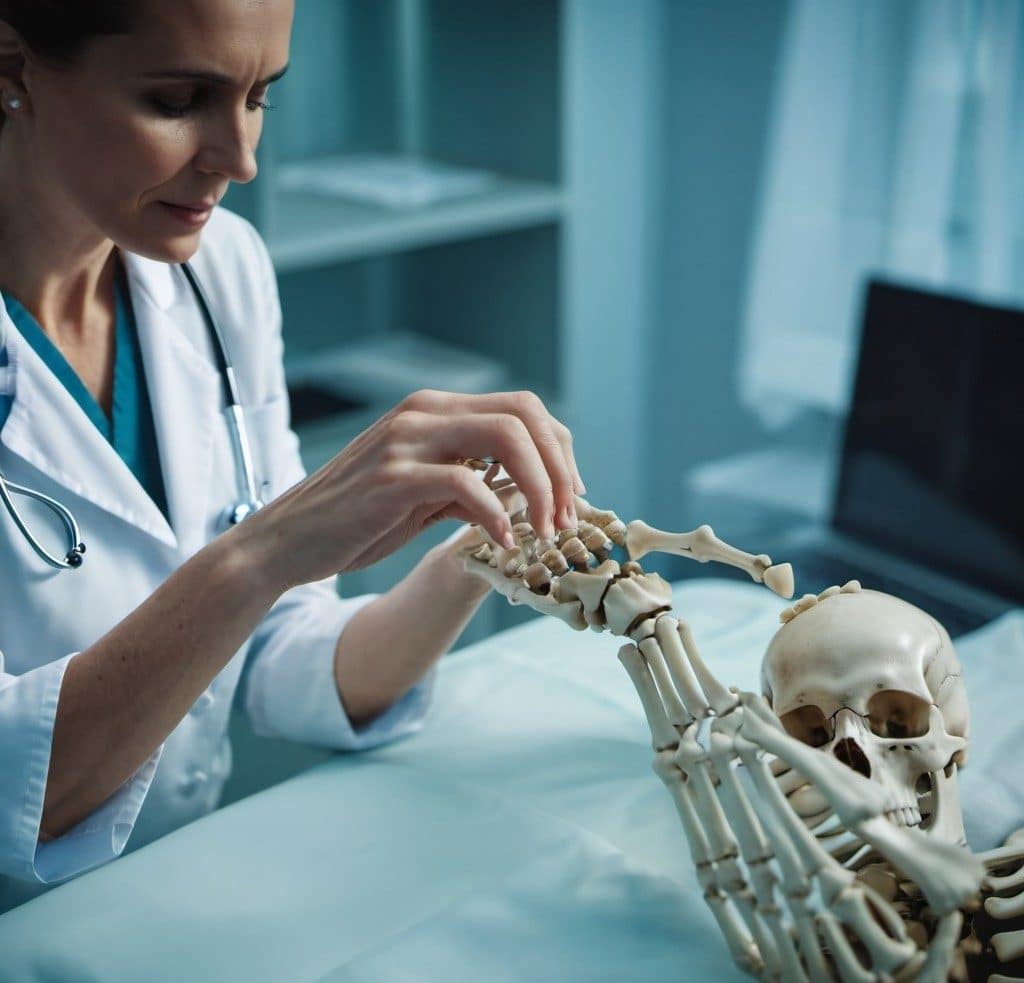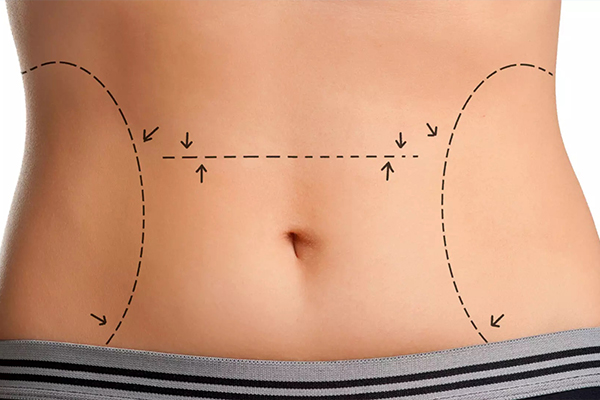
Orthopedic in Iran
Get your arms and legs back on track without paying an arm and a leg.
Why Iran for orthopedic surgery?
Iran is among the top 10 countries in orthopedic surgery, thanks to the impressive progress it has made in this field in recent years. Apart from that, Iran offers orthopedic surgery at very reasonable prices compared to other countries. In short, skilled surgeons, hospitable people, and the low cost of services make Iran a smart choice for those who want to have orthopedic surgery abroad.
Orthopedic surgery can be a transformative experience, offering relief from pain and improved mobility. Here’s a comprehensive and positive overview tailored for patients considering or preparing for orthopedic surgery in Iran:
What is Orthopedic Surgery?
Orthopedic surgery focuses on treating issues related to the musculoskeletal system, which includes bones, joints, ligaments, tendons, and muscles. Whether it’s a joint replacement, fracture repair, or treatment for chronic conditions like arthritis, orthopedic surgery can significantly enhance your quality of life. In Iran, you’ll find highly skilled orthopedic surgeons who use the latest techniques and technology to ensure the best outcomes for their patients.
What Preparations Should We Have Before Orthopedic Surgery?
Medical Preparations:
1. Consultations and Tests:
– Consult with Your Surgeon: Discuss the details of your surgery, understand the procedure, and address any concerns.
– Complete Medical Tests: This may include blood tests, X-rays, MRIs, or CT scans to provide a comprehensive view of your condition.
2. Medications:
– Review Current Medications: Inform your doctor about all medications and supplements you are taking. Some may need to be adjusted or stopped before surgery.
– Pre-surgery Instructions: Follow any pre-surgery medication guidelines provided by your healthcare team.
3. Diet and Fasting:
– Follow Dietary Guidelines: Adhere to any special dietary instructions given by your doctor.
– Fasting: Typically, you’ll need to fast for 8-12 hours before surgery. Your surgeon will provide specific instructions.
Lifestyle Adjustments:
4. Smoking and Alcohol:
– Quit Smoking:If you smoke, quitting or reducing smoking before surgery can improve your recovery.
– Avoid Alcohol: Refrain from drinking alcohol at least 24-48 hours before surgery.
5. Physical Condition:
– Stay Active: Engage in light exercises as advised by your doctor to stay fit.
– Rest Well: Ensure you get plenty of rest in the days leading up to the surgery.
Practical Preparations:
6. Hospital Arrangements:
– Confirm Admission Details: Know your hospital admission time and follow any specific instructions.
– Arrange Transportation: Plan for someone to drive you to and from the hospital.
7. Personal Items:
– Pack Essentials: Bring comfortable clothing, toiletries, and any necessary medical documents.
– Leave Valuables at Home: Avoid bringing valuables or jewelry to the hospital.
8. Support System:
– Arrange for Assistance: Have a friend or family member assist you on the day of surgery and during the initial recovery period.
Mental and Emotional Preparation:
9. Educate Yourself:
– Understand the Procedure: Learn about the surgery and recovery process to reduce anxiety.
– Prepare Questions: Write down any questions for your healthcare team.
10. Emotional Support:
– Join Support Groups: Consider talking to others who have had similar surgeries.
– Practice Relaxation: Use techniques like deep breathing or meditation to manage stress.
How Much Recovery Do We Need After the Operation?
Recovery time varies based on the type of orthopedic surgery. Generally :
– Minor Procedures: 4-6 weeks
– Major Surgeries (e.g., joint replacements): 3-6 months
Your surgeon will provide a tailored recovery plan, including physical therapy, to help you regain strength and mobility. The advanced rehabilitation facilities in Iran ensure you receive the best care for a swift recovery.
How Should We Take Care After Orthopedic Surgery?
- Follow Post-Op Instructions: Adhere to your surgeon’s guidelines for wound care, medications, and activity levels.
- Physical Therapy: Engage in prescribed physical therapy exercises to aid recovery and restore function.
- Pain Management: Use prescribed pain relief methods, such as medications or ice packs, to manage discomfort.
- Healthy Diet: Maintain a nutritious diet to support healing.
- Avoid Strenuous Activities: Gradually increase activity levels as advised by your healthcare team.
When Can We Return to Work After Surgery?
The time to return to work depends on the surgery and your job’s physical demands:
– Desk Jobs: Typically, 2-6 weeks
– Physically Demanding Jobs: May require 3-6 months
Your surgeon will provide specific recommendations based on your progress and recovery.
In Iran, you’ll receive comprehensive care from pre-surgery preparation to post-surgery rehabilitation, ensuring a smooth and successful journey to recovery. The highly skilled orthopedic surgeons and state-of-the-art facilities are dedicated to helping you return to an active, pain-free life.
Orthopedic problems :
Note: While the provided categories cover a broad spectrum of orthopedic issues, it’s important to remember that orthopedic conditions often overlap and interact. For instance, a hip fracture can lead to osteoarthritis.
Revised Paragraphs
1. Hip Joint Problems
Hip joint problems encompass a range of conditions affecting the ball-and-socket joint connecting the leg to the pelvis. Common issues include osteoarthritis (wear and tear on cartilage), rheumatoid arthritis (autoimmune inflammation), hip fractures (broken hip bone), and avascular necrosis (bone death due to insufficient blood supply). Surgical interventions, such as hip replacement, may be necessary to restore function and alleviate pain.
2. Knee Joint Problems
The knee joint, composed of bones, cartilage, ligaments, and tendons, can be affected by various conditions. Osteoarthritis and rheumatoid arthritis are common degenerative diseases causing knee pain and stiffness. Meniscus tears and ligament injuries often result from sports or accidents. For severe cases, knee replacement surgery or arthroscopic procedures (minimally invasive surgery) may be required.
3. Shoulder Problems
The shoulder joint, a complex ball-and-socket joint, is susceptible to injuries and degenerative conditions. Rotator cuff tears (damage to shoulder muscles), dislocations (displacement of the joint), and arthritis can cause pain, weakness, and limited mobility. Arthroscopic surgery or shoulder replacement may be necessary depending on the severity of the condition.
4. Bone Deformities and Misalignments
Bone deformities can be present from birth (congenital) or acquired through injury or disease. These abnormalities can affect alignment, function, and appearance. Surgical correction, such as osteotomy (bone cutting), may be required to improve bone position and restore normal function.
5. Bone Fractures
A bone fracture is a break in the bone, typically caused by trauma. Depending on the type and location of the fracture, treatment may involve casting, splinting, or surgery. Fracture repair, bone fusion (joining bones together), or bone grafting (using bone tissue to promote healing) are common surgical options.
6. Spinal Problems
The spine, a complex structure of bones, nerves, and soft tissues, can be affected by various conditions. Herniated discs (bulging of spinal cushions), spinal stenosis (narrowing of the spinal canal), scoliosis (curvature of the spine), and vertebral fractures can cause pain, numbness, and weakness. Surgical interventions, such as spinal fusion, may be necessary to stabilize the spine and relieve symptoms.
7. Soft Tissue Injuries
Soft tissues, including muscles, tendons, and ligaments, can be injured through trauma or overuse. These injuries often result in pain, swelling, and limited movement. Treatment typically involves rest, ice, compression, and elevation (RICE), physical therapy, and, in some cases, surgery to repair damaged tissue.
8. Hand and Wrist Problems
The hand and wrist are complex structures with numerous bones, joints, tendons, and nerves. Carpal tunnel syndrome (compression of a nerve in the wrist), fractures, and tendon injuries are common conditions affecting this area. Surgical interventions, such as carpal tunnel release or hand surgery, may be necessary to restore function and relieve pain.
9. Foot and Ankle Problems
The foot and ankle are subject to various conditions, including bunions (bone enlargement at the base of the big toe), fractures, and tendon injuries. These problems can cause pain, swelling, and difficulty walking. Surgical intervention, such as foot surgery, may be required in severe cases.
10. Height Increase Surgery
Height increase surgery is a specialized procedure that lengthens bones to increase a person’s height. Surgeons typically consider it for individuals with significant short stature due to underlying medical conditions or congenital abnormalities. The procedure involves complex surgical techniques and carries significant risks.
Causes of Orthopedic Problems
Hip Joint Problems
Hip joint problems encompass a range of conditions affecting the ball-and-socket joint connecting the leg to the pelvis. Common issues include osteoarthritis (wear and tear on cartilage), rheumatoid arthritis (autoimmune inflammation), hip fractures (broken hip bone), and avascular necrosis (bone death due to insufficient blood supply). Surgical interventions, such as hip replacement, may be necessary to restore function and alleviate pain. In such cases, surgical interventions like hip replacement may be necessary to restore function and alleviate pain .
Knee Joint Problems
Similar to the hip, knee problems often stem from cartilage degeneration, as seen in osteoarthritis and rheumatoid arthritis. Meniscal tears are common sports injuries resulting from twisting or sudden stops. Ligament injuries occur from forceful impacts or overstretching.
Shoulder Problems
Shoulder problems are frequently caused by overuse or injury. Rotator cuff tears are often due to repetitive overhead motions or trauma. Dislocations happen when the arm is forced beyond its normal range of motion. Shoulder arthritis can be caused by wear and tear, previous injuries, or underlying conditions.
Bone Deformities and Misalignments
These can be congenital, meaning present at birth due to genetic factors. Alternatively, they can be acquired through trauma, such as fractures that heal improperly, or from certain medical conditions like bone diseases.
Bone Fractures
Bone fractures are almost always caused by trauma, such as falls, car accidents, or sports injuries. However, in some cases, fractures can occur from minor impacts due to weakened bones caused by osteoporosis or other bone diseases .
Spinal Problems
Spinal problems can originate from various factors. Herniated discs occur when the cushioning between vertebrae bulges or ruptures. Spinal stenosis is often caused by age-related wear and tear on the spine. Scoliosis can be congenital or develop during childhood, and vertebral fractures are usually due to trauma or osteoporosis.
Soft Tissue Injuries
Soft tissue injuries typically result from acute trauma, such as sprains, strains, or tears from accidents or sports. Overuse injuries can also occur from repetitive motions, leading to inflammation and pain.
Hand and Wrist Problems
Carpal tunnel syndrome occurs when repetitive hand motions or inflammation compress the median nerve in the wrist. Additionally, accidents or falls usually cause hand and wrist fractures. Similarly, overuse or trauma can lead to tendon injuries .
Foot and Ankle Problems
Biomechanical factors, such as foot structure or shoe wear, often cause bunions by creating abnormal pressure on the big toe joint. Foot and ankle fractures are commonly due to trauma, and tendon injuries can occur from overuse or sudden strain.
Height Increase Surgery
Surgeons typically consider height increase surgery for short stature caused by genetic or developmental factors, such as growth hormone deficiencies or bone growth disorders.





















